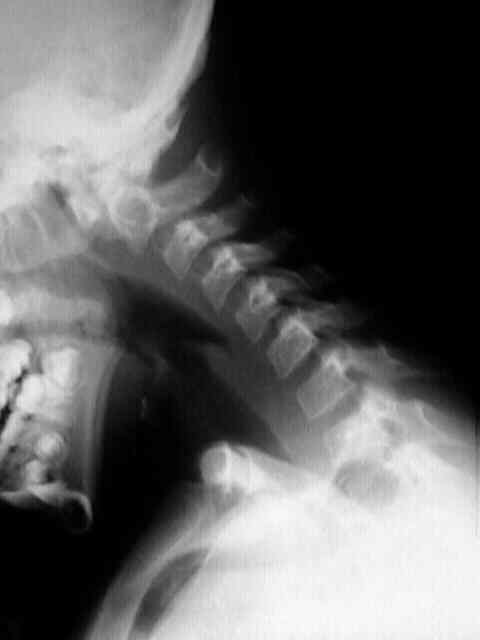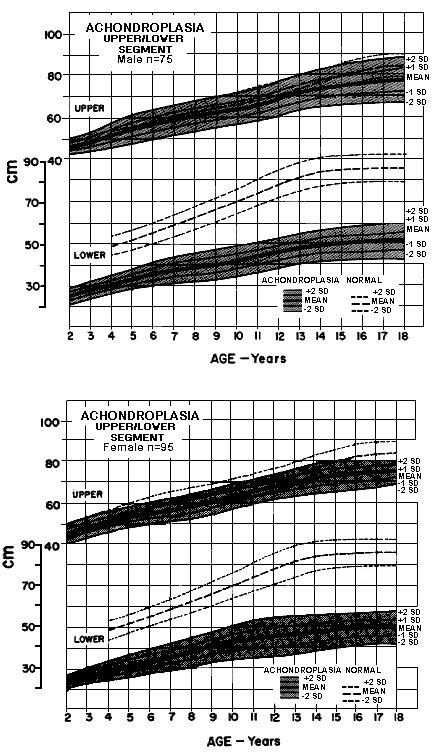Signs of Achondroplasia:
* Disproportionate short stature.
* The head is large and the arms and legs are short (particulary noticable in the upper arms and thighs).
* Prominent forehead, a flat or depresssed area at the base of the nose a protruding jaw and sometimes poor dental structure. The teeth are crowded and the upper and lower teeth may be poorly aligned.

* An adult with Achondroplasia has an exaggerated foreward curve to the lower spine, which presents a swaybacked appearance.
*The legs of a person with Achondroplasia almost always become bowed and the elbows often cannot be straightened completely.
* Limited twisting ability available at the elbows.
* Hands are short. Feet are short, flat, and broad.
* Intellegence is generally normal.
* Affected men average 51.8 inches in height, while women average 48.6 inches. Graph:

Related Physical Conditions:
* Good head control may not occur until the infant is three or four months old.
* Many children do not walk until relatively late often between 24 and 36 months.
* Weight must be kept under control throughout the individual's life because people with this disorder are prone to weight gain.
* Young children with Achondroplasia are at an increased risk for specific neurologic and respiratory problems in some cases. |


